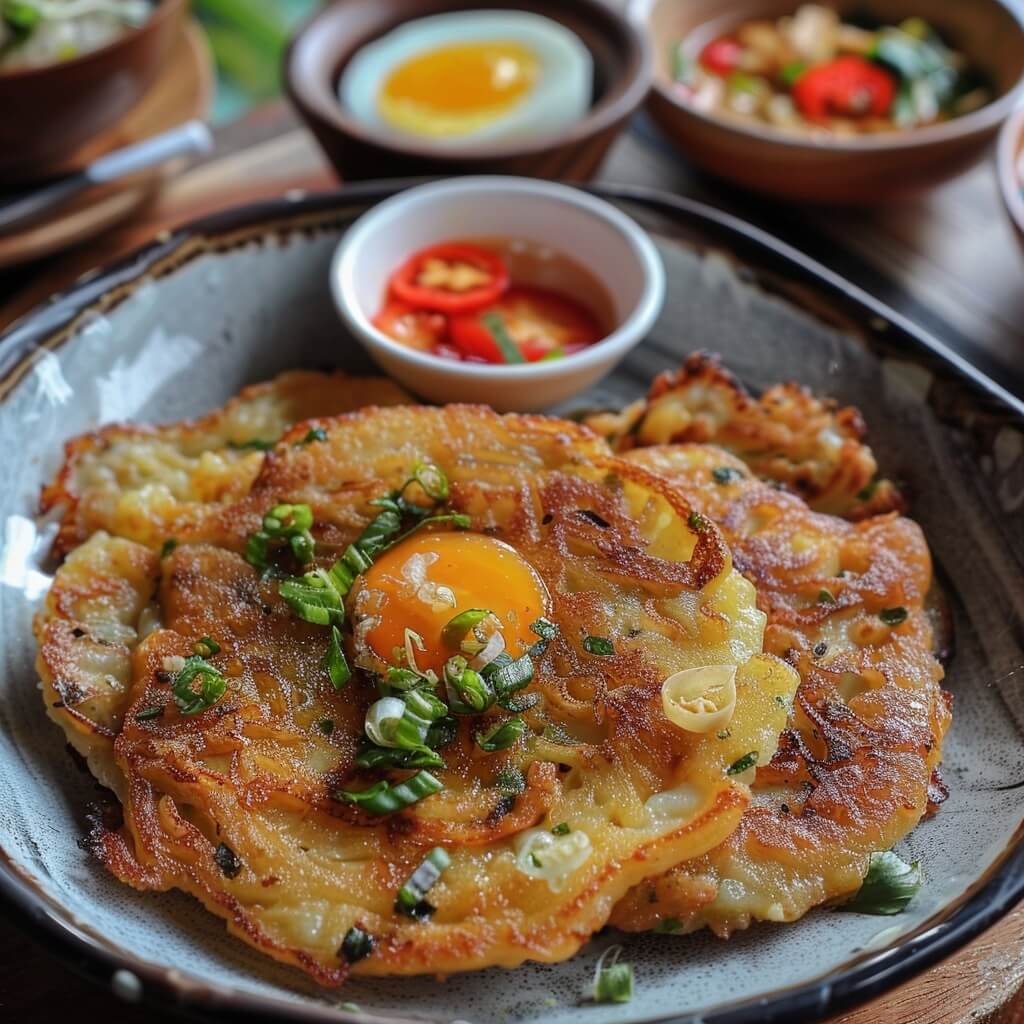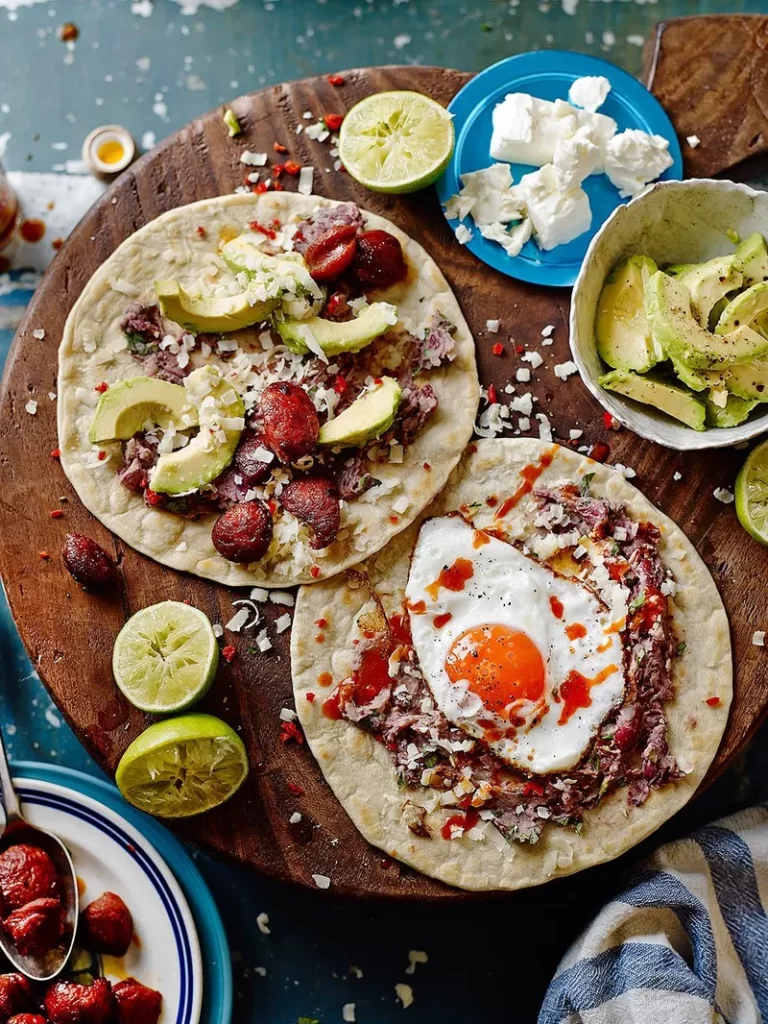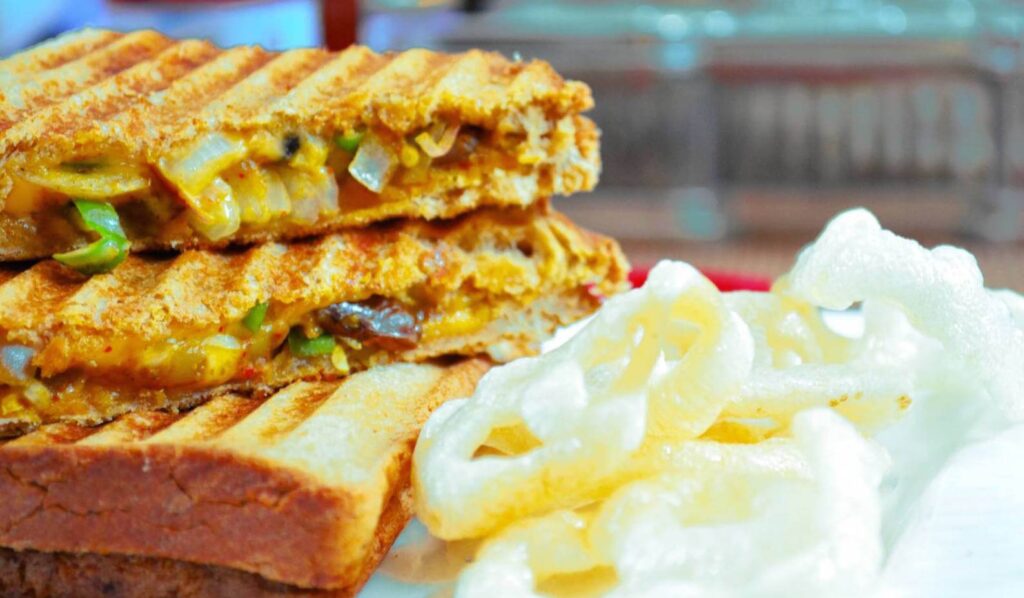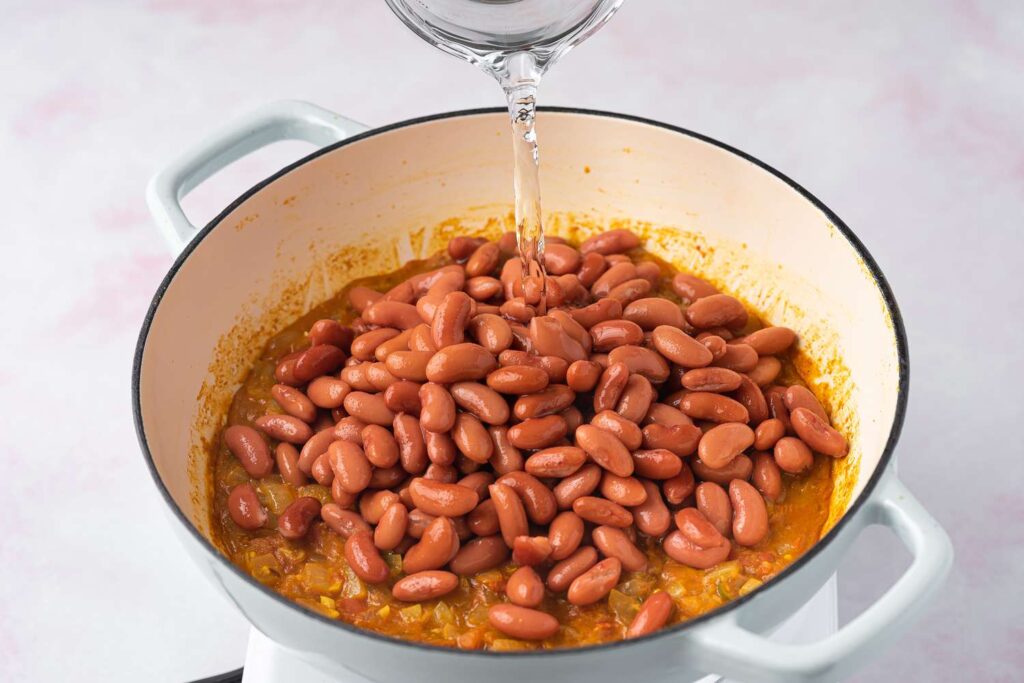Exploring Filipino Cuisine: The Perfect Tortang Talong Recipe

In the vibrant tapestry of Filipino cuisine, there are few dishes as beloved and versatile as tortang talong. This simple yet flavorful eggplant omelette holds a special place in the hearts and palates of many Filipinos, offering a delightful combination of earthy flavors and comforting textures. Allow me to take you on a culinary journey through the rich cultural background of tortang talong and share with you an authentic recipe that captures its essence. Anecdote and Cultural Background Picture this: a bustling kitchen filled with the savory aromas of garlic, onions, and frying eggplant. In Filipino households, tortang talong is more than just a dish—it’s a symbol of home and hospitality. Stemming from humble origins, this dish has found its way into the hearts and kitchens of families across the Philippines, embodying the resourcefulness and creativity of Filipino cooking. Ingredients To recreate the magic of tortang talong in your own kitchen, you will need: Recipe and Instructions Cooking Time Nutrition Facts While tortang talong is a delicious and satisfying dish, it also offers a range of nutritional benefits. Rich in fiber, vitamins, and minerals, eggplants are known for their antioxidant properties and ability to promote heart health. Paired with protein-rich eggs, this dish provides a well-rounded combination of nutrients essential for a balanced diet. Tips for Success With this authentic tortang talong recipe, you can experience the flavors of Filipino cuisine in the comfort of your own home. Whether enjoyed as a hearty breakfast, a satisfying lunch, or a comforting dinner, tortang talong is sure to delight your taste buds and transport you to the vibrant streets of the Philippines.
Celebrating Pongal: A Recipe from the Heart
Growing up in Tamil Nadu, the festival of Pongal was always a special time for me and my family. As the harvest season approached, the air buzzed with excitement and anticipation. I fondly remember the early morning rituals, the beautifully adorned cows, and the vibrant kolams (rangoli) that adorned our doorsteps. But what stands out the most is the aroma of freshly cooked Pongal wafting through the house, a dish that epitomizes the spirit of the festival. Today, I’d like to share with you my family’s cherished Pongal recipe, a simple yet soul-satisfying dish that celebrates the harvest and the warmth of togetherness. Ingredients For this traditional Pongal recipe, you’ll need: Instructions Cooking Time The total cooking time for Pongal is approximately 45 minutes, including preparation and cooking. Pongal is more than just a dish; it’s a celebration of the harvest and a testament to the joy of sharing meals with loved ones. This simple yet flavorful recipe brings a piece of Tamil Nadu’s rich cultural heritage to your table. Whether you’re celebrating the festival or simply craving a warm, comforting meal, this Pongal recipe is sure to bring a smile to your face and warmth to your heart. Happy cooking and joyous Pongal! More Indian Recipes Follow Us on Instagram
Unwrapping the Authenticity of Honduran Baleadas: A Culinary Journey

Introduction Honduran cuisine is a vibrant tapestry of flavors, and at the heart of its street food culture is the beloved baleada. This blog post will take you on a gastronomic adventure, unraveling the secrets of the baleada—its unique ingredients, the art of crafting the perfect recipe, and the joyous experience of savoring this iconic Honduran cuisine recipes. Ingredients Baleadas are characterized by their simplicity and the harmonious combination of a few key ingredients. To embark on your baleada-making journey, gather the following: Recipe and Instructions Now that you have your ingredients ready, let’s dive into the step-by-step process of crafting the perfect Honduran baleada: Step 1: Prepare the Flour Tortillas Begin by making or heating your flour tortillas. Freshly made tortillas are ideal, but store-bought ones work well too. Warm them on a griddle or skillet, ensuring they are soft and pliable. Step 2: Cook the Refried Beans In a pan, heat the refried beans, incorporating flavors like garlic and onions. If using lard, add a small amount for richness. Stir the beans until heated through and set aside. Step 3: Assemble the Baleada Lay out a warm tortilla and spread a generous portion of refried beans in the center. Add slices of queso fresco and avocado. For those looking to elevate their baleada, this is the stage to add additional toppings like scrambled eggs or chorizo. Step 4: Fold and Enjoy Fold the tortilla over the filling, creating a half-moon shape. The baleada is now ready to be enjoyed. Some prefer to fold it in half again for easier handling. Cooking Time The beauty of baleadas lies in their quick preparation, making them an ideal choice for a satisfying and convenient meal. From start to finish, it takes approximately 15 to 20 minutes to prepare a batch of baleadas, making them a perfect option for a quick lunch or snack. Conclusion Honduran baleadas encapsulate the essence of simplicity, flavor, and cultural identity. Whether enjoyed as a street food snack or a comforting homemade meal, the baleada stands as a testament to the richness of Honduran culinary traditions. Embrace the art of baleada-making, and let your taste buds embark on a journey through the diverse and delightful flavors of Honduran cuisine recipes. More Honduran Recipes Follow Us on Instagram
Exploring the Culinary Delight of Honduran Tamales: A Taste of Tradition

Introduction Tamales, a beloved dish across Latin America, have their own unique and delectable variations in different regions. In the Honduras cuisine recipes, tamales hold a special place in the hearts and palates of the locals. This blog post will delve into the intricacies of Honduran tamales, exploring the rich array of ingredients, the step-by-step recipe, and the delightful culinary journey that awaits those who savor this traditional delicacy, the tamales from honduras. Ingredients Tamales from honduras boast a diverse set of ingredients that contribute to their distinctive flavor profile. The key components include: Recipe and Instructions Making Honduran tamales is a labor of love, often involving a communal effort due to the intricate steps involved. Here’s a simplified recipe for you to try at home: Step 1: Prepare the Masa Start by soaking the corn husks or banana leaves in warm water to make them pliable. In a large mixing bowl, combine the masa with water, achiote paste, and salt. Mix until you achieve a smooth, consistent dough. Step 2: Season and Cook the Meat Season the meat with achiote paste, garlic, cumin, and other desired spices. Cook the meat until tender, creating a flavorful filling for the tamales. Step 3: Assemble the Tamales Lay out a soaked husk or banana leaf, and spread a thin layer of masa on it. Place a generous spoonful of the seasoned meat and vegetables in the center. Fold the sides of the husk or leaf over the filling, creating a neat package. Step 4: Steam to Perfection Arrange the tamales in a steamer, ensuring they are tightly packed to maintain their shape. Steam the tamales for about 1 to 1.5 hours, allowing the masa to cook thoroughly and absorb the flavors of the filling. Cooking Time The cooking time for Honduran tamales can vary, but on average, it takes approximately 1 to 1.5 hours to steam them to perfection. The slow and gentle steaming process ensures that the masa becomes tender while allowing the flavors to meld harmoniously. Conclusion Honduran tamales are more than just a dish; they are a celebration of tradition, community, and the vibrant flavors that define the country’s culinary landscape. Whether enjoyed during festive occasions or as a comforting homemade meal, these tamales from Honduras encapsulate the essence of Honduran cuisine recipes and gastronomy. Embrace the art of tamale-making and savor the rich tapestry of flavors that this beloved dish brings to the table. More Honduran Recipes Follow Us on Instagram
Amaretti Cheesecake Recipe: A Decadent and Classic Dessert

Amaretti Cheesecake recipe is a classic dessert that combines the rich and creamy flavor of cheesecake with the delicate almond flavor of Amaretti cookies. This dessert is perfect for any occasion, from a formal dinner party to a casual family gathering. In this article, we’ll explore the cultural significance and history of Amaretti Cheesecake, as well as provide step-by-step instructions, ingredients, and tips for making it at home. We’ll also include information about the nutrients and calories in each slice, so you can enjoy this indulgent dessert guilt-free. Amaretti Cheesecake Recipe Cultural Significance and History Amaretti cookies have a long history in Italy, dating back to the Renaissance period. These small, crunchy cookies are made from almonds, sugar, and egg whites, and were originally created as a way to use up leftover almond paste from making marzipan. Over time, Amaretti cookies became a popular dessert all over Italy, and their popularity spread to other parts of the world. Cheesecake also has a rich history, dating back to ancient Greece. The Greeks would often make a simple cheesecake by mixing cheese with honey and wheat. Cheesecake later became popular in Europe during the Middle Ages, and in the United States during the early 1900s. Amaretti Cheesecake is a modern twist on these classic desserts, combining the nutty flavor of Amaretti cookies with the creamy texture of cheesecake. Amaretti Cheesecake Recipe Ingredients For the crust: For the filling: Amaretti Cheesecake Recipe Instructions Amaretti Cheesecake Recipe Tips Nutrients and Calories One slice of Amaretti Cheesecake (1/12 of the recipe) contains approximately: While Amaretti Cheesecake is certainly not a low-calorie dessert, it can be enjoyed in moderation as part of a balanced diet. The high fat content is due to the cream cheese and butter used in the recipe, but these ingredients can be substituted for lower-fat options if desired. Summary Amaretti Cheesecake is a delicious and indulgent dessert that combines the classic flavors of Amaretti cookies and cheesecake. This dessert has a long history in Italy and is now enjoyed all over the world. Making Amaretti Cheesecake at home is easy, and the recipe provided in this article includes step-by-step instructions and tips for ensuring the cheesecake turns out perfectly. While Amaretti Cheesecake is not a low-calorie dessert, it can be enjoyed in moderation as part of a balanced diet. So next time you’re looking for a decadent dessert, try making Amaretti Cheesecake – your taste buds will thank you! Conclusion Amaretti Cheesecake is a classic and indulgent dessert that combines the nutty flavor of Amaretti cookies with the creamy texture of cheesecake. This dessert has a long history in Italy and is now enjoyed all over the world. Making Amaretti Cheesecake at home is easy, and the recipe provided in this article includes step-by-step instructions and tips for ensuring the cheesecake turns out perfectly. While Amaretti Cheesecake is not a low-calorie dessert, it can be enjoyed in moderation as part of a balanced diet. So why not give this delicious dessert a try? Your taste buds will thank you! More Italian Recipes Follow Us on Instagram
Chocolate Amaretti Cookies Recipe: Decadent and Delicious

Amaretti cookies recipe are a traditional Italian treat that has been enjoyed for centuries. They are crunchy on the outside and chewy on the inside, and have a distinct almond flavor that is hard to resist. However, for those who love chocolate, there is an even more decadent version of this classic cookie: Chocolate Amaretti Cookies. These cookies combine the best of both worlds – the nutty flavor of Amaretti cookies with the rich, indulgent taste of chocolate. In this article, we will explore the history and cultural significance of Chocolate Amaretti Cookies, as well as provide step-by-step instructions and tips for making the perfect batch at home. Chocolate Amaretti Cookies Cultural Significance and History Amaretti cookies have been a part of Italian culture for centuries. They were first made in the town of Saronno in Lombardy, Northern Italy, and were originally made with apricot kernels. However, due to the toxicity of apricot kernels, almonds have since become the preferred ingredient. Today, Amaretti cookies are enjoyed throughout Italy and are often used as an ingredient in other desserts, such as tiramisu. Chocolate Amaretti Cookies are a newer variation of the classic cookie. They add chocolate to the mix, which takes the cookies to a whole new level of indulgence. They are perfect for those who have a sweet tooth but also love the nutty flavor of Amaretti cookies. Chocolate Amaretti Cookies Cooking Time The cooking time for Chocolate Amaretti Cookies is around 15-18 minutes at 350 degrees Fahrenheit. The ingredients are similar to the classic Amaretti cookies, but with the addition of cocoa powder and dark chocolate. Here is a list of the ingredients you will need: Chocolate Amaretti Cookies Ingredients Chocolate Amaretti Cookies Instructions and Step-by-Step Preparation Chocolate Amaretti Cookies Tips To make the perfect Chocolate Amaretti Cookies, it’s important to use high-quality ingredients, including almond flour and dark chocolate chips. Be sure to not overmix the dough, as this can result in tough cookies. It’s also a good idea to use a cookie scoop to ensure that each cookie is the same size, and to roll the balls in powdered sugar for a sweet finishing touch. Nutrition Facts Each Chocolate Amaretti Cookie contains approximately 110 calories, 6g of fat, 12g of carbohydrates, and 2g of protein. They are also a good source of vitamin E and magnesium. Conclusion Chocolate Amaretti Cookies are a decadent twist on a classic Italian treat. They combine the nutty flavor of Amaretti cookies with the rich taste of chocolate, making them a perfect indulgence for those with a sweet tooth. With just a few simple ingredients and some careful preparation, you can create a batch of these delicious cookies in no time. Whether you’re looking for a new dessert to impress your friends and family or just want to indulge in something sweet and satisfying, Chocolate Amaretti Cookies are a great choice. In this article, we’ve explored the cultural significance and history of Amaretti cookies, as well as provided step-by-step instructions and tips for making Chocolate Amaretti Cookies at home. We’ve also provided information about the nutrients and calories in each cookie, so you can enjoy them guilt-free. Overall, Chocolate Amaretti Cookies are a delicious treat that is sure to please any chocolate lover. They are perfect for a special occasion or just as a sweet snack to enjoy anytime. Give this recipe a try and discover the decadent flavor of these irresistible cookies! More Italian Recipes Follow Us on Instagram
Classic Amaretti Cookies Recipe: Taste of Italian Tradition

Amaretti cookies recipe are a classic Italian treat that have been enjoyed for centuries. These small, round cookies are made with almond flour, egg whites, and sugar, and are known for their crunchy exterior and chewy interior. In this article, we’ll take a closer look at the cultural significance and history of Amaretti cookies, as well as provide step-by-step instructions for making your own batch at home. Cultural Significance and History Amaretti cookies have been a part of Italian cuisine for over 300 years, with the first recorded recipe appearing in the mid-18th century. The name “Amaretti” comes from the Italian word “amaretto,” which means “little bitter.” This is because the cookies are traditionally made with bitter almonds, which have a slightly bitter taste. Over time, the recipe for Amaretti cookies has evolved, with many variations appearing across different regions of Italy. In some areas, the cookies are made with sweet almonds instead of bitter, while in others they are flavored with ingredients such as chocolate, lemon, or pistachio. Today, Amaretti cookies are enjoyed around the world as a sweet treat or as an ingredient in other desserts, such as cheesecake or tiramisu. Instructions for Making Classic Amaretti Cookies Making classic Amaretti cookies at home is easy, and requires just a few simple ingredients. Here’s what you’ll need: Step 1: Preheat your oven to 350 degrees Fahrenheit. Step 2: In a large mixing bowl, combine the almond flour, sugar, and salt. Step 3: In a separate mixing bowl, beat the egg whites until they are stiff peaks form. Add the almond extract and continue beating until the mixture is smooth. Step 4: Gradually fold the egg white mixture into the almond flour mixture, stirring gently until the two are fully combined. Step 5: Using a tablespoon, scoop out the cookie dough and form it into small, round balls. Place the balls onto a baking sheet lined with parchment paper. Step 6: Bake the cookies for 15-18 minutes, or until they are lightly golden brown on the outside. Step 7: Remove the cookies from the oven and allow them to cool on the baking sheet for a few minutes before transferring them to a wire rack to cool completely. Tips for Making the Perfect Amaretti Cookies Here are a few tips to help you make the perfect Amaretti cookies: Cooking Time and Nutritional Information The cooking time for classic Amaretti cookies is approximately 15-18 minutes, depending on your oven. In terms of nutritional information, each Amaretti cookie contains approximately: Amaretti cookies are also a good source of vitamin E and magnesium. Summary Amaretti cookies are a classic Italian treat that have been enjoyed for centuries. These small, round cookies are made with almond flour, egg whites, and sugar, and are known for their crunchy exterior and chewy interior. They have cultural significance in Italy and have been enjoyed as a sweet treat or as an ingredient in other desserts around the world. Making classic Amaretti cookies at home is easy and requires just a few simple ingredients. The process involves combining almond flour, sugar, and salt in a mixing bowl, beating egg whites in a separate bowl, and gradually folding the egg white mixture into the almond flour mixture until they are fully combined. Then, scoop out the cookie dough and form them into small, round balls and bake them for approximately 15-18 minutes at 350 degrees Fahrenheit. To make the perfect Amaretti cookies, it’s essential to use high-quality almond flour, not overmix the dough, and use a cookie scoop to form perfectly round balls of dough. Each Amaretti cookie contains approximately 80 calories, 4.5g of fat, 9g of carbohydrates, and 2g of protein. They are also a good source of vitamin E and magnesium. Conclusion In conclusion, the classic Amaretti cookies recipe is a delicious and easy way to experience a taste of Italian tradition. The cookies have cultural significance in Italy and have been enjoyed for centuries. Making them at home is simple and requires just a few basic ingredients. By following the instructions and tips provided in this article, you can create the perfect batch of Amaretti cookies that are crunchy on the outside and chewy on the inside. Plus, they are a good source of essential nutrients like vitamin E and magnesium. So why not try making a batch today and enjoy the taste of Italian tradition in your own home? More Italian Recipes Follow Us on Instagram
Rajma Cutlet Recipe: A Delicious and Nutritious Snack

Rajma Cutlet Recipe, or kidney beans, is a staple ingredient in many Indian households. It is a rich source of protein, fiber, and essential nutrients, making it a popular choice for vegetarians and health-conscious individuals. Rajma cutlet is a delicious and easy-to-make snack that combines the goodness of rajma with a blend of spices and herbs. In this article, we will explore the cultural significance, history, instructions, and tips for preparing rajma cutlet, as well as its nutrients and calories. Cultural Significance and History of Rajma Rajma is believed to have originated in Peru and was brought to India by the Portuguese. It quickly became a popular ingredient in North Indian cuisine and is now widely cultivated in the country. Rajma is an important part of the Punjabi diet and is often served with rice or roti. It is also used in a variety of dishes, such as rajma chawal, rajma masala, and rajma salad. Ingredients for Rajma Cutlet Recipe Rajma Cutlet Recipe Step-by-Step Preparation Tips for Making Rajma Cutlet Recipe Rajma Cutlet Recipe Cooking Time The cooking time for rajma cutlets varies depending on the method of cooking. If you are deep frying them, it would take around 3-4 minutes per batch. If you are shallow frying them, it would take around 2-3 minutes per side. If you are baking them in the oven, it would take around 15-20 minutes at 375°F (190°C). It is important to keep an eye on the cutlets and flip them as needed to ensure even cooking. Nutrients, Vitamins, and Calories in Rajma Cutlet Recipe Rajma cutlet is a nutritious snack that is rich in protein, fiber, and essential nutrients. One serving of rajma cutlet (approximately 50g) contains the following: Rajma Cutlet Recipe Frequently Asked Questions Summary Rajma cutlet is a delicious and healthy snack that can be made using leftover rajma. It is a great way to use up leftovers and also a healthy way to add protein to your diet. Rajma cutlets are a popular street food in India and are loved by people of all ages. They can be served as an evening snack or as a party appetizer. Conclusion Rajma cutlet is a versatile and nutritious snack that is easy to make and delicious to eat. It is a great way to use up leftovers and also a healthy way to add protein to your diet. With its rich flavor and crispy texture, it is a popular street food in India and can be served as an evening snack or as a party appetizer. The recipe is easy to customize and can be made with a variety of ingredients to suit your taste. So the next time you have leftover rajma, give this recipe a try and enjoy a healthy and delicious snack. More Asian Recipes More Indian Recipes Follow Us on Instagram
Rajma Sandwich Recipe: A Delicious Twist on a Classic Dish

Rajma Sandwich Recipe, also known as kidney beans, is a staple ingredient in many Indian dishes. It’s a protein-rich food that provides many essential nutrients, making it a popular choice for vegetarians and vegans. One unique way to enjoy the delicious flavor of rajma is in a sandwich. In this blog post, we’ll explore the cultural significance and history of rajma, as well as provide step-by-step instructions for making a tasty rajma sandwich. Rajma Sandwich Cultural Significance and History Rajma has a long history in Indian cuisine, with evidence of its cultivation dating back to at least 2000 BCE. It’s commonly used in North Indian dishes such as Rajma Masala and Rajma Chawal. Rajma is also an important ingredient in many vegetarian and vegan diets, providing a significant source of protein and fiber. Instructions for Making Rajma Sandwich To make a delicious rajma sandwich, you’ll need the following ingredients: Rajma Sandwich Step-by-Step Preparation Tips for Making the Perfect Rajma Sandwich Rajma Sandwich Cooking Time Preparation Time: 10 minutes Cooking Time: 15 minutes Total Time: 25 minutes Nutrition Facts A serving size of 1 sandwich (made with 2 slices of bread) contains approximately: Summary Rajma sandwich is a tasty and healthy snack that combines the goodness of rajma with the convenience of a sandwich. Rajma or kidney beans are a popular ingredient in Indian cuisine and are known for their nutritional benefits. The sandwich is made by mixing cooked rajma with fresh vegetables and spices and spreading it on bread slices before toasting them until golden brown. It can be served as a breakfast or evening snack and is a hit among kids and adults alike. In this article, we discussed the history and cultural significance of rajma in Indian cuisine, as well as the nutritional benefits of rajma sandwich. We also provided a step-by-step recipe and tips for making the perfect rajma sandwich, along with its nutrition facts. So, the next time you crave a healthy and flavorful sandwich, give this recipe a try and enjoy the goodness of rajma in every bite! More Asian Recipes More Indian Recipes Follow Us on Instagram
Rajma Dal Recipe: A Flavorful and Nutritious Dish

Rajma Dal Recipe is a popular dish in North Indian cuisine, known for its rich flavor and nutritious value. It is a hearty and filling dish that can be enjoyed as a main course with rice or roti. In this article, we will explore the cultural significance and history of Rajma Dal, provide step-by-step instructions for preparation, share some tips for making it delicious, and outline its nutritional value. Cultural Significance and History of Rajma Dal Rajma Dal is a staple food in North India, particularly in the states of Punjab and Himachal Pradesh. It is often served during festivals and special occasions, such as weddings and family gatherings. In Punjabi culture, Rajma Dal is seen as a symbol of prosperity and is associated with good luck and fortune. It is also a popular dish among vegetarians and is often served in langars (community kitchens) in Sikh temples. The history of Rajma Dal can be traced back to the ancient Indus Valley civilization, where it was a common dish. The dish has evolved over time, with different regions adding their own unique flavors and ingredients. Today, it is a beloved dish that is enjoyed throughout India and around the world. Rajma Dal Ingredients: Rajma Dal Step-by-Step Preparation: Tips for Making Rajma Dal: Nutrition Facts of Rajma Dal: One serving (1 cup) of Rajma Dal contains approximately: Rajma Dal Recipe Frequently Asked Questions Summary Rajma Dal is a popular North Indian dish made with kidney beans and a blend of spices. This dish has a long history in Indian cuisine and is a staple in many households. The preparation of Rajma Dal involves soaking the rajma overnight and pressure cooking them until they are soft and fully cooked. A separate pan is used to saute onions, tomatoes, and spices which are then combined with the cooked rajma. The dish is then simmered until it reaches the desired consistency and garnished with fresh coriander leaves. Rajma Dal is a great source of protein, fiber, and iron and can be served with steamed rice or roti. Conclusion Rajma Dal is a delicious and nutritious dish that has been enjoyed in Indian cuisine for generations. It is easy to make and is a great source of protein, fiber, and iron. By following the step-by-step instructions and tips provided in this article, you can make a delicious pot of Rajma Dal that is sure to be a hit with your family and friends. More Asian Recipes More Indian Recipes Follow Us on Instagram
